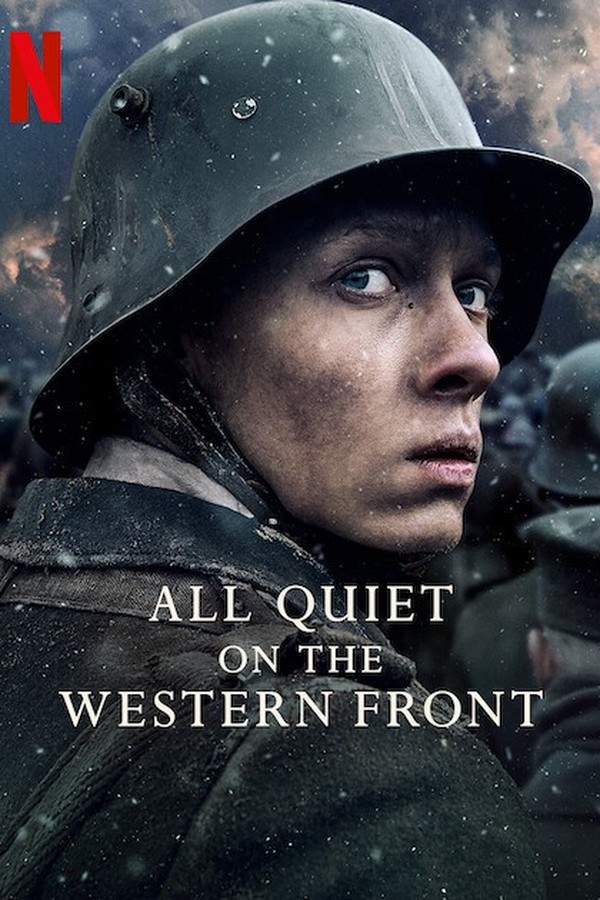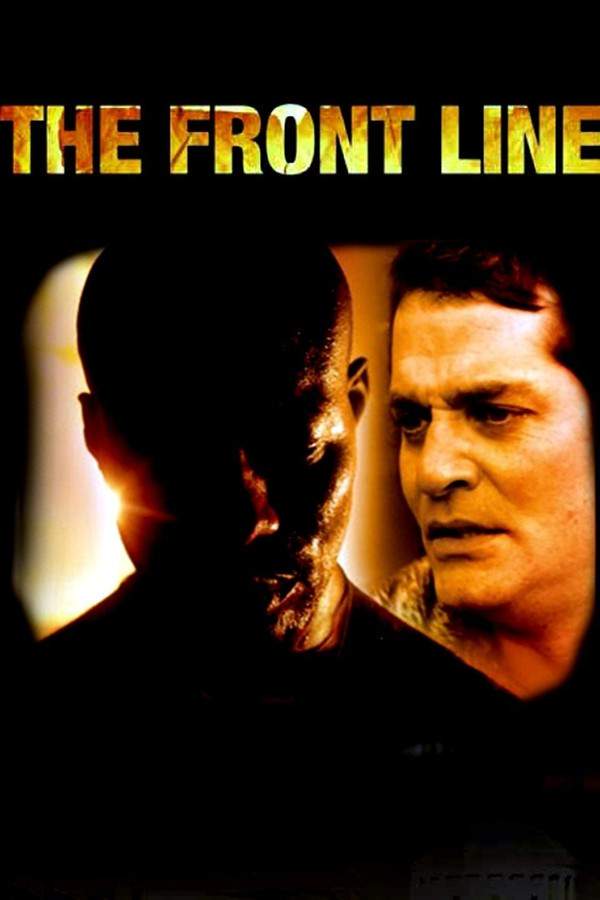
Fires on the Plain
Year: 2014
Runtime: 87 mins
Language: Japanese
During the final stages of World War II, Japanese soldiers struggle to survive in the Philippines as they face a determined local resistance and the advancing American forces. Cut off and desperately short on supplies, the remaining troops endure the brutal realities of war and fight to maintain their position amidst the chaos and destruction.
Warning: spoilers below!
Haven’t seen Fires on the Plain yet? This summary contains major spoilers. Bookmark the page, watch the movie, and come back for the full breakdown. If you're ready, scroll on and relive the story!
Fires on the Plain (2014) – Full Plot Summary & Ending Explained
Read the complete plot breakdown of Fires on the Plain (2014), including all key story events, major twists, and the ending explained in detail. Discover what really happened—and what it all means.
Private Tamura, a writer, is ridden with tuberculosis and is sent away from his unit to a military hospital, only to be refused admission because the ward is already full. He is shuffled back and forth between treatment and orders, until officials essentially tell him not to return and urge him to end his own life rather than try again.
Alone, Tamura discovers that military discipline has collapsed as the Japanese army dissolves into the jungle, subsisting largely on yams. He scavenges what he can, stealing food from local Filipinos while the war’s absurd horror unfolds around him: a despondent soldier self-destructs with a grenade, and others lie dying from malnutrition or injuries along the road. In the chaos, he encounters two soldiers, Yasuda and Nagamatsu, who try to trade cigarettes for yams with passing troops. He declines the cigarette but offers Nagamatsu a yam out of pity, a small act of compassion in a sinking world.
The struggle for survival continues as Tamura forages and the air above the path is punctured by American aircraft strafing the scattered units. At what seems to be an abandoned church, he stabs a dog, a grim sign of the moral fray closing in on him. He soon comes upon a pile of Japanese corpses and, beneath a floorboard, discovers a cache of salt, but his discovery is betrayed when two Filipino civilians uncover him. In a panicked haze, he shoots one of them; the other escapes, and Tamura’s shots miss their mark.
Tamura escapes with his stolen food, abandoning his rifle in the process. He then joins up with remnants from another company and learns that the army’s orders are to retreat to Palompon. He travels with them, trading his salt for yams, while morbid jokes circulate about cannibalism in the New Guinea campaign—a chilling possibility Tamura can’t quite decide if it’s a joke or a grim truth.
Crossing an open road at night becomes deadly as American and Filipino forces gun down Japanese soldiers trying to retreat. In a desperate moment, Tamura prepares a white flag to surrender to a passing American jeep. Just before stepping out, he watches another Japanese soldier do the same; that soldier is shot by a vengeful Filipino woman in the jeep, despite the American soldier’s attempt to take the surrender. Tamura realizes that crossing the road to Palompon is futile and turns back into the jungle.
Delirious and hearing corpses speak in his fatigue, Tamura is found and saved from starvation by Nagamatsu, the man he had given a yam to earlier. He is fed bark, water, and “monkey meat,” while being bullied into giving his grenade to Yasuda, whose leg is wounded and rolled up for protection. After hearing a shot, Tamura races after Nagamatsu and discovers that Nagamatsu had fired on a fleeing Filipino civilian; the so‑called “monkeys” he hunted were other humans all along. The uneasy alliance between Nagamatsu and Yasuda fractures as both fear the other will kill for meat.
With the only source of clean water guarded, Yasuda is forced out, and the two men clash as Nagamatsu shoots Yasuda when he tries to negotiate. In the ensuing struggle, Tamura seizes the rifle and shoots Nagamatsu, who coldly tells him—before dying—that he knew Tamura would eat him.
The scene shifts to post-war Japan, where Tamura writes a memoir of these events. He claims to awaken in an American field hospital in his notes and to have little memory of what happened after shooting Nagamatsu, yet the memory lingers and hovers over him as he dry heaves at the recollection.
Last Updated: October 09, 2025 at 16:04
Explore Movie Threads
Discover curated groups of movies connected by mood, themes, and story style. Browse collections built around emotion, atmosphere, and narrative focus to easily find films that match what you feel like watching right now.
Movies about survival and psychological breakdown like Fires on the Plain
Films where the struggle to survive erodes sanity and morality.If you appreciated the psychological torment and moral decay in Fires on the Plain, explore these other movies. They depict characters pushed to their limits, where the fight for survival becomes a harrowing journey into the darkest corners of the human psyche, similar to war stories and survivalist dramas.
Narrative Summary
Narratives in this thread typically follow a linear but psychologically dense journey. A character is isolated in a hostile environment, and as resources dwindle and hope fades, their mental state unravels. The central conflict shifts from physical survival to a battle against their own degrading humanity, often ending in profound despair.
Why These Movies?
These movies are grouped by their intense focus on the psychological cost of survival. They share a bleak tone, high emotional weight, and a commitment to showing how extreme circumstances can lead to dehumanization, moral ambiguity, and profound trauma.
Grim and realistic war dramas like Fires on the Plain
Stories that strip away glory to reveal the raw, brutal truth of conflict.For viewers who found Fires on the Plain's stark portrayal of military collapse compelling. These similar films are bleak war stories that avoid sensationalism, instead focusing on the harsh realities faced by those trapped in conflict, featuring themes of survival, isolation, and the loss of humanity.
Narrative Summary
The narrative pattern is one of gradual disintegration. A unit or individual is cut off from command and supply, forced to confront starvation, disease, and an unseen enemy. The story unfolds as a series of escalating hardships that systematically break down discipline, camaraderie, and any lingering notions of honor, leading to an inevitable, tragic conclusion.
Why These Movies?
These films are united by their commitment to an anti-war perspective conveyed through a bleak, high-intensity tone. They share a slow, deliberate pacing that mirrors the grinding nature of survival, and are characterized by a heavy emotional weight derived from explicit violence and disturbing themes like moral decay.
Unlock the Full Story of Fires on the Plain
Don't stop at just watching — explore Fires on the Plain in full detail. From the complete plot summary and scene-by-scene timeline to character breakdowns, thematic analysis, and a deep dive into the ending — every page helps you truly understand what Fires on the Plain is all about. Plus, discover what's next after the movie.
Fires on the Plain Timeline
Track the full timeline of Fires on the Plain with every major event arranged chronologically. Perfect for decoding non-linear storytelling, flashbacks, or parallel narratives with a clear scene-by-scene breakdown.

Characters, Settings & Themes in Fires on the Plain
Discover the characters, locations, and core themes that shape Fires on the Plain. Get insights into symbolic elements, setting significance, and deeper narrative meaning — ideal for thematic analysis and movie breakdowns.

Fires on the Plain Spoiler-Free Summary
Get a quick, spoiler-free overview of Fires on the Plain that covers the main plot points and key details without revealing any major twists or spoilers. Perfect for those who want to know what to expect before diving in.

More About Fires on the Plain
Visit What's After the Movie to explore more about Fires on the Plain: box office results, cast and crew info, production details, post-credit scenes, and external links — all in one place for movie fans and researchers.



























